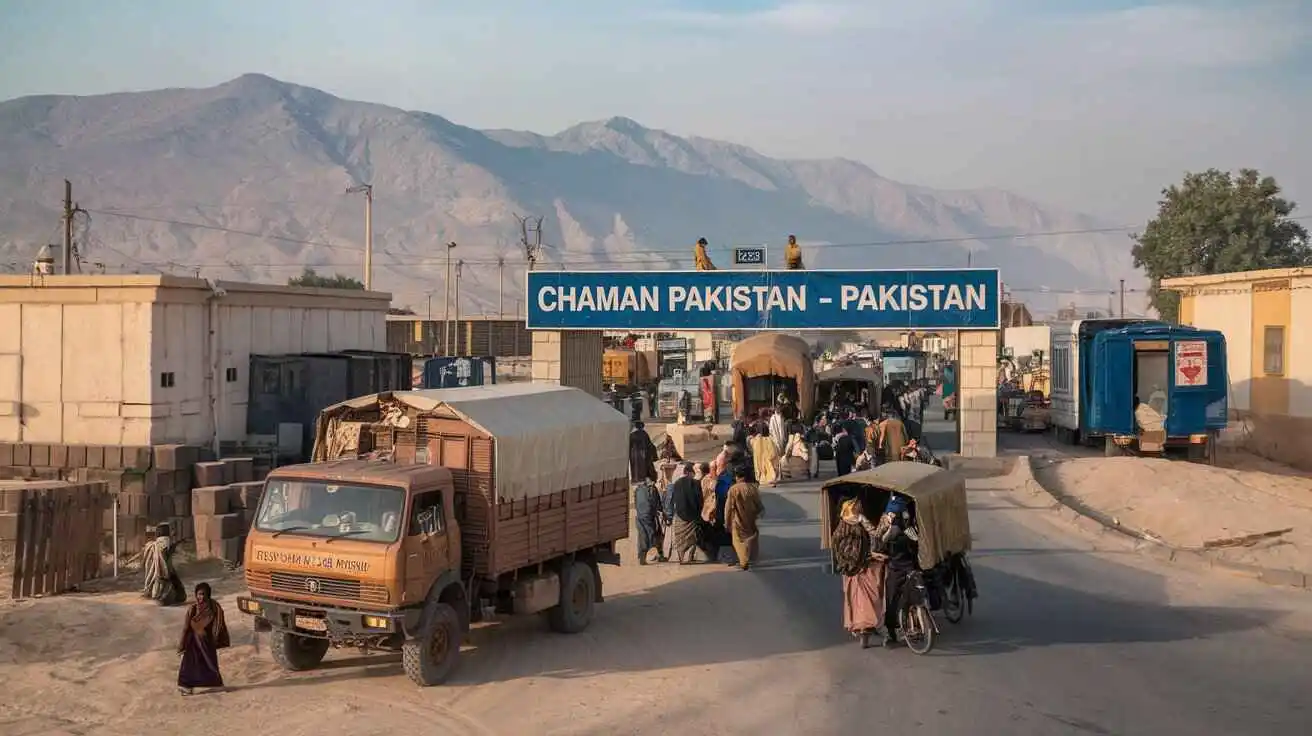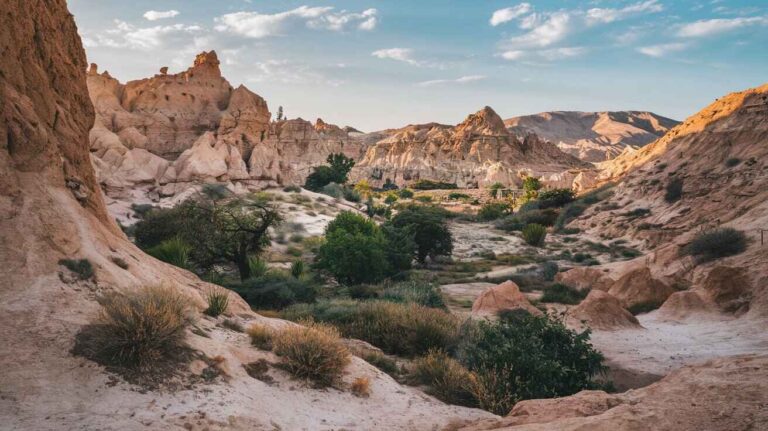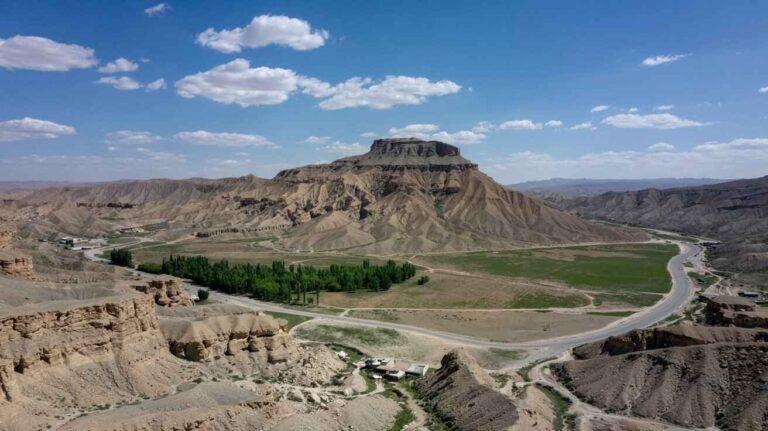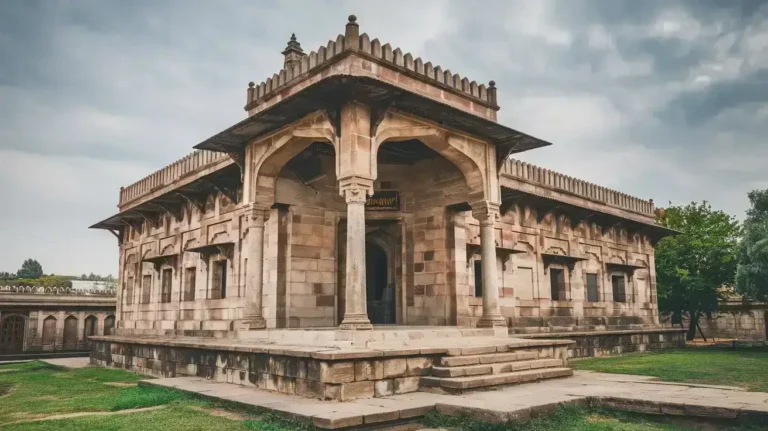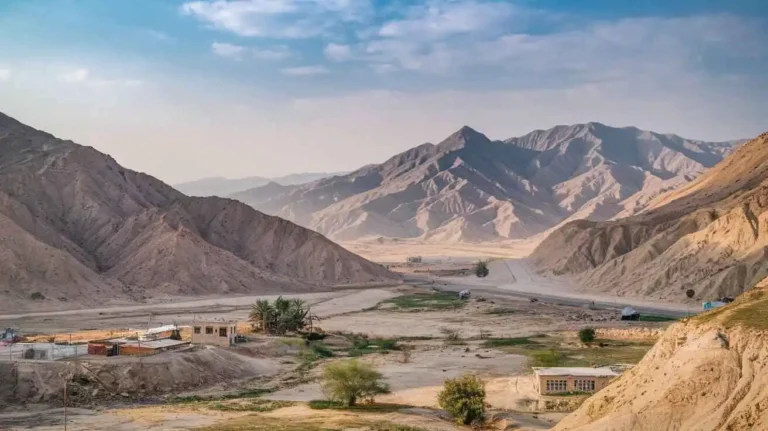Chaman: A Vital Border City
Chaman Border
Chaman Border in Balochistan Province, Pakistan, Chaman is an important trade and transit hub along the Afghanistan-Pakistan border. It serves as the capital of Chaman District, which was formed in 2021 after bifurcating Qila Abdullah. This strategic location connects Pakistan with Kandahar Province, Afghanistan, through the Wesh–Chaman border crossing, a key trade route. Positioned at an elevation of 1,338 m (4,390 ft), Chaman is a crucial gateway for trade, including China-Pakistan Economic Corridor (CPEC) projects. The city also holds historical significance as it witnessed the arrival of Afghan refugees during the Soviet invasion of 1979.
Beyond trade, Chaman District is known for its administrative importance, consisting of Chaman City Tehsil and Chaman Saddar Tehsil. The city lies south of the Spin Boldak border town and serves as a dry port facilitating goods transport. With a history intertwined with cross-border movement, Chaman plays a role similar to the Wahga Crossing between Pakistan and India. The influence of Pashto and Urdu languages is evident in daily life, reflecting the region’s rich cultural blend.
Etymology
The name Chaman is believed to be derived from the word “garden” in Urdu, reflecting the area’s past greenery. However, there is no verifiable evidence to confirm this fully. Some accounts suggest that during the period before partition, a Hindu trader played a role in naming the city, but this remains a singular, unfounded claim without historical records to support it.
Before becoming widely known as Chaman, the area had different local references, but none were officially documented. Despite various theories, the lack of clear historical proof makes it difficult to pinpoint the exact origin of the name.
History
Located near the border, Chaman has been a key supply route for NATO forces in Afghanistan since the early 2000s. The route has also been used on a regular basis by thousands of Afghan refugees fleeing into Pakistan due to conflict. However, the city has faced multiple security challenges, including bombings in 2017 and 2020, with a major incident known as the Chaman bombing in 2021. In December 2022, tensions escalated when the Afghan Taliban opened indiscriminate fire, causing civilian casualties on the Pakistani side. The situation worsened in October 2023, when the border crossing process became more stringent, requiring a passport, visa, and national identification card, leading to protests in the city.
Historically, Chaman has been an important place for centuries, serving as a passage for Afghans, Mughals, and British rulers. Some historians and legends suggest that the name originated from a Hindu merchant, Chaman Das, who was involved in trade in the area. A popular tale describes the region as once being covered with lush green gardens and grass, with the Persian language influencing its name. The British formally took control in 1891, constructing the Khojak railway tunnel through the Khojak Pass to connect Qilla Abdullah with the rest of South Asia.
In 1894, the British purchased 5,604 acres of land from locals for Rs. 5,000, turning Chaman into a military station. Due to its strategic location, the city has seen repeated attacks, especially from the bordering town of Spin Boldak, Afghanistan. It has been a site of conflict where various forces have tried to invade the region. Despite these challenges, Chaman has remained a vital trade town, playing a crucial role in the region’s economy and security.
Climate
The climate of Chaman is shaped by its hot semi-arid nature, influenced heavily by the local steppe environment. Positioned at an elevation of 4,383 ft, the city experiences sweltering summers and cold winters with distinct seasonal contrasts. From May 18 to September 14, the hot season dominates, bringing daily highs above 90°F. July is particularly intense, averaging 99°F, while nights offer little relief, staying around 75°F. In contrast, the cool season starts on November 29, lasting until March 1, with temperatures rarely crossing 62°F. January is the coldest month, seeing lows of 33°F and highs of 53°F.
Chaman’s arid conditions mean precipitation is scarce, totaling just 232 mm yearly. The driest spell hits in June, bringing zero rainfall, while January stands as the wettest month, recording up to 65 mm of rain. The city’s temperature range varies significantly, fluctuating between 32°F and 100°F, though extreme dips below 25°F or surges past 104°F remain rare. With mostly clear skies year-round, the landscape undergoes drastic shifts, from parched summer heat to dry winter cold.
Sitting at 30.918° latitude and 66.453° longitude, Chaman’s topography remains relatively stable within a 2-mile radius. However, even subtle variations can influence local weather patterns, making certain pockets slightly warmer or cooler. This unique geographical setup, combined with the Köppen BSh classification, ensures that the city maintains its semi-arid identity, where clear skies and temperature extremes define daily life.
CULTURE
Chaman is a unique place where the Afghan-Pashtoon culture is deeply embedded in daily life. The city’s proximity to Afghanistan has shaped its traditions, with a strong influence from both sides of the border. Various tribes, including Achakzai, Barech, Kakar, Badizai, Durrani, and Syed, live here, each contributing to the city’s rich heritage. Local markets are always in vogue, filled with daily consumable items like flour, rice, cloth, tea, and fruits such as watermelons, grapes, and pomegranates. Due to its strategic location, goods are both imported and exported, ensuring a steady supply of essentials.The inhabitants of Chaman have a diverse linguistic background. Most people speak and understand Pashto, while others are fluent in Balochi, Brahui, Urdu, Persian, Dari, and even Uzbaki. This blend of languages reflects the city’s multicultural spirit, where different communities coexist peacefully. Agricultural trade plays a vital role, with products like fertilizers constantly exchanged across the border. Whether in the bustling markets or everyday interactions, Chaman stands as a home where traditions and commerce come together seamlessly.
Climate data for Chaman
| Month | Jan | Feb | Mar | Apr | May | Jun | Jul | Aug | Sep | Oct | Nov | Dec | Year |
|---|---|---|---|---|---|---|---|---|---|---|---|---|---|
| Mean Daily Max (°C) | 13.3 | 16.0 | 21.2 | 27.3 | 33.8 | 38.7 | 39.3 | 38.5 | 35.2 | 29.2 | 21.1 | 16.8 | 27.5 |
| Daily Mean (°C) | 6.4 | 9.0 | 13.8 | 19.5 | 24.7 | 29.1 | 31.0 | 29.6 | 24.9 | 18.9 | 12.8 | 8.5 | 19.0 |
| Mean Daily Min (°C) | -0.4 | 2.1 | 6.5 | 11.7 | 15.6 | 19.5 | 22.7 | 20.7 | 14.7 | 8.7 | 3.6 | 0.3 | – |
Chaman is a well-known city in Balochistan, located near the Afghan border. It plays a key role in trade and is an important hub connecting Quetta with Afghanistan. According to the 2017 Pakistani census, Chaman was ranked as the fifth-largest city in the province. In 2023, it was officially declared a district with 61,915 households and a total population of 466,218. The Pashtun majority dominates the northern part, and the sex ratio stands at 127.40 males for every 100 females.Education in Chaman has challenges, with a literacy rate of 39.97%— 47.73% males and 30.60% females. A large portion, 182,044 individuals (39.05%), is under 10 years of age, while 130,139 people (27.91%) reside in urban areas. Religious minorities are present but small, with Christians and Hindus forming just 1,654 (0.35%) of the population. Pashto remains the predominant language, spoken by 99.37% of residents.
| Religiousgroup | 1941 13–14 | 2017 | ||
| Pop. | % | Pop. | % | |
| Hinduism | 2,898 | 43.58% | 379 | 0.31% |
| Islam | 2,812 | 42.29% | 122,263 | 99.23% |
| Sikhism | 697 | 10.48% | — | — |
| Christianity | 242 | 3.64% | 515 | 0.42% |
| Jainism | 1 | 0.02% | — | — |
| Ahmadiyya | — | — | 49 | 0.04% |
| Total population | 6,650 | 100% | 123,206 | 100% |
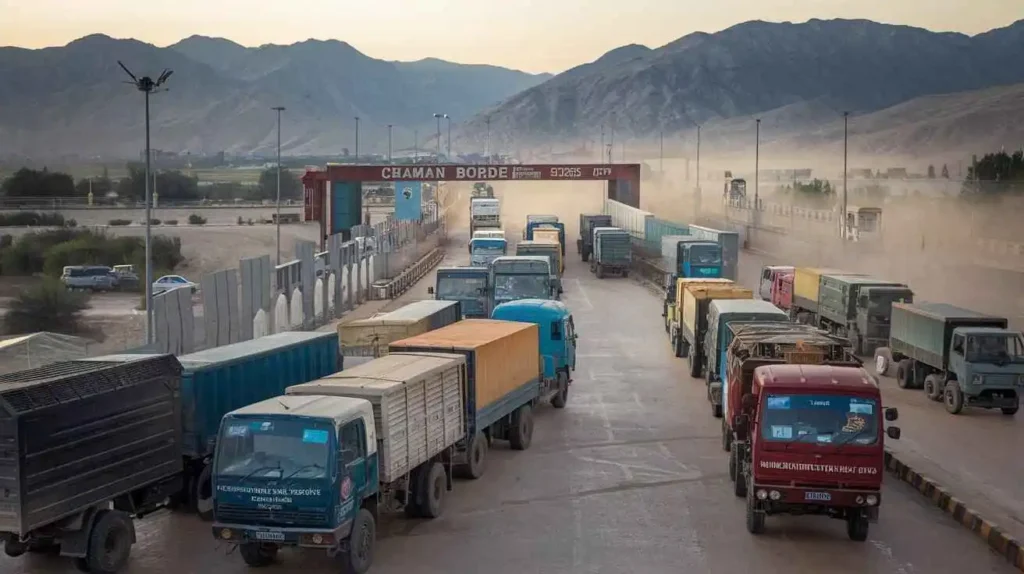
AREA
Located in the Chaman Division, this city holds great importance in Balochistan due to its location near the Afghan border. The area of Chaman spans 1,341 km², making it a significant region in terms of trade and movement. Based on the 2017 census, the population of Chaman was recorded at 434,561, and it has grown steadily over the years.As the 5th most populated city in Balochistan, Chaman has a population density of 324.1/km², showing a balance between urban and rural settlements. The city’s growing economy, along with its strategic border position, makes it a vital hub for business and daily movement between Pakistan and Afghanistan.
Transport
The Chaman railway station plays a key role in connecting Pakistan with Afghanistan. A slow passenger train runs daily between Quetta and Chaman, providing essential services for travelers and traders. The railway also links to parts of Afghanistan, particularly Kandahar, making it an important route for movement across the border.
In 2008, there was a proposed plan to extend the railway beyond Chaman, aiming to reach Central Asia through the historic Silk Road. This expansion would have strengthened trade and connectivity, especially on the eastern side of the region. However, the project remains uncompleted, and Chaman continues to serve as the last stop on this vital railway route.
Trade
The town of Chaman is an important trade point in the Balochistan region, serving as a gateway for business and transport between Pakistan and Afghanistan. It connects key routes leading to Karachi and other major cities, making it a vital hub for economic activity. During the period of martial law from 1977 to 1985, the city experienced shifts in trade dynamics, affecting local businesses and cross-border movement.
People in Chaman actively import various consumer goods, including cars, motorbikes, and motor rickshaws from Japanese, Chinese, and UAE markets. The trade also includes phones, cosmetics, and perfumes, which are highly popular among buyers. This thriving market has played a significant role in the development of the region, strengthening commercial ties between Pakistan and its neighboring countries.
Sports
Football and Its Passionate Rivalry
Football is the most popular sport in Chaman, a city that has produced some of the most notable footballers in Pakistan. Many players from Chaman have represented the national team, including Muhammad Essa, Kaleemullah, Mehmood Khan, Jadid Khan Pathan, and Fareed Ullah. Their journey from local grounds to international matches has inspired countless young athletes. The city’s love for the game is visible in every neighborhood, where children dream of becoming the next football star.
One of the most exciting events in Pakistani domestic football is the Chaman Derby, where two major clubs, Afghan Chaman and Muslim FC, face off in a fierce rivalry. This match attracts the highest crowds, with fans passionately supporting their teams. The energy in the stadium during this clash is unmatched, making it one of the most thrilling moments in Pakistan’s football scene.
Administrative divisions
It contains the following Tehsils:
| Tehsil | Area(km²) | Pop.(2023) | Density(ppl/km²)(2023) | Literacy rate(2023) | Union Councils |
| Chaman Tehsil | 22 | 130,139 | 5,915.41 | 51.36% | … |
| Chaman Saddar Tehsil | 1,319 | 336,079 | 254.80 | 35.18% | … |
RESOURCE ENDOWMENT MAIN CROPS
Agriculture and Livestock in Chaman
The primary occupation of the people in Chaman is agriculture, as the region is well-suited for cultivation despite being surrounded by high hills and deserts. Farmers in the district grow supreme quality grapes, watermelons, and melons, which are in abundant supply. The area’s unique climate helps produce some of the best fruits in Pakistan, making them highly valued in local and national markets.
Besides farming, livestock is also significant in Chaman, with a total of 662333 animals, including cattle, buffaloes, sheep, goats, camels, horses, mules, and asses. Poultry farming is also common, with around 395372 birds raised in the area. The numbers reflect the strong dependence on livestock, providing food and income to many families. With 109413 people engaged in these activities, and land spanning 1350 square kilometers, Chaman remains a vital hub for agricultural and livestock production.
Challenges and Progress in Education
The state of education in Chaman is similar to other districts of Balochistan, where access to quality schooling remains a challenge. The district suffers from multiple issues like poverty, cultural constraints, and low population density, which make it hard for children in scattered settlements to attend school regularly. According to the Annual Status Report 2014, the indicators show poor outcomes in teaching and learning, with missing facilities like water and toilets further affecting retention rates. The availability of proper schools remains a bottleneck, while gaps in enrolment and transition rates continue to adversely impact students, especially girls in the 6-15 age groups.
The district has all levels of education, including primary, middle, secondary, and higher, but still faces a dropout issue. In 2013-14, BEMIS data reported that survival rates in primary and middle schools were 32% and 21%, while transition beyond secondary education hampers further progress. Around 51% of children aged 6-10 are enrolled, increasing to 96% for 11-13 but dropping slightly to 94% for 14-15. Gender gaps are also noticeable, with boys having a 90% enrolment rate, while girls lag at 67%. Over the last two years, 24% of students failed to continue beyond middle school, making it a key concern for improving education in Chaman.
ECONOMIC POTENTIAL
TRADE
Chaman is a major source of income for many residents, as the district serves as an important trade point in the region. It is interesting to note that a large number of persons originating from Chaman are engaged in trade activities, with the majority of them being part of the male population. Unlike other districts, Chaman has strong commerce links with foreign countries like Japan, Hong Kong, and Korea. The Chaman border crossing point, located in Balochistan, plays a crucial role in connecting Pakistan with Afghanistan, allowing goods to flow between the two nations.
The Pashtoons residing on either side of the border share a similar language and cultural background, making trade easier despite visa restrictions being strictly followed. Chaman acts as a gateway for trade routes extending to Karachi, but the area lacks infrastructure, proper equipment, and administrative buildings. The absence of modern cargo processing, pedestrian entry and exit gates, and segregated lanes for customs clearance affects business efficiency.
Due to inadequate systems, long lines of queuing trucks and longer than required processing times cause delays. Security concerns add further challenges, as proper testing, detection, and baggage vehicle scanning remain a priority. There is also a need for improved information communication technology (ICT) to fast-track operations. Without these upgrades, traders continue to face difficulties, impacting Chaman’s potential as a thriving trade hub.
AGRICULTURE/ HORTICULTURE
In District Chaman, agriculture plays a key role despite being water-stressed, affecting both drinking supply and irrigation. Farmers grow high-value cash crops, including vegetables and fruits, but rely heavily on water-intensive methods, with 99.98 per cent irrigated area depending on tube wells. Wheat is the major crop of the Rabi Season, while Apple, Apricot, Grapes, Peach, and Pomegranate are the leading fruits. During the Kharif season, farmers cultivate rain-fed cash crops like onion, along with fruit, fodder, vegetables, and melon to sustain local markets.
LIVE STOCK
Livestock is an important source of income for the majority of the rural population in District Chaman, with a large percentage of the workforce engaged in rearing animals. Many households depend on it for nutrition, consuming milk, yogurt, lassi, kurt, meat, and beef, while also earning from the sale of animals, wool, and hides. The rugged, hilly terrain makes transportation challenging, but both men and women take part in the sector, managing watering, feeding, and cleaning abodes. Dairy products like butter, ghee, and cream are sold in local markets, though fluctuating prices often drop during a drought and increase around Eid-ul-Azha, when animals are slaughtered. Without a proper meat processing plant, hides and skins are mostly sold raw to shops selling cream locally.
Poultry Farming and Rural Development
The government has supported poultry farming in District Chaman, where both small-scale private setups and commercial farms operate. Broiler and layer breeds are raised, with rural households typically keeping 8 to 10 birds at home for eggs and meat, which are mostly consumed domestically. Recognizing the enormous potential, the department launched the Development of Rural Poultry project in 2005-06, providing birds to poor families at 80% subsidized rates. Over time, many have converted their farms to a commercial scale, improving skills among young women, who find farming an especially preferred business due to its maximum return in a short time.
Thriving Ice Industry
Chaman, a bordering town, has a strong industries sector, with ice factories playing a key role in supporting the local economy. These factories are essential, especially in the hot summers, when demand for ice is high. The city has multiple ice factories, which help in providing employment opportunities to many people in the region.
Several well-known ice factories operate in Chaman, each serving different parts of the town. Some of the major ones include Hafiz Malak Ice Factory, Hajji Bacha Khan Ice Factory, and Haji Sado Khan Ice Factory, which have been supplying ice for years. Other notable factories like Ice Factory Murda Karaz Road, New Ice Factory Rehman Kawol, and Old Ice Factory continue to meet the local demand efficiently.
These ice factories not only serve the city but also supply ice to nearby areas, making them an important part of Chaman’s economic landscape. The availability of these factories ensures that businesses, households, and transporters always have access to ice, which is crucial for daily life in a town with extreme temperatures.
With the industries growing steadily, the bordering town of Chaman continues to benefit from these essential businesses, securing jobs and strengthening the local economy.
MINERAL
Antimony is a major mineral found in District Chaman, recognized as an important metal due to its various industrial uses. It can occur naturally in different forms, including native elements and ore deposits. The most common types are sulphide minerals, such as Sb₂S₃ (Stibnite), and oxide minerals, like valentinite and Sb₂O₄H₂O (Stibilonite). These minerals are valuable for their unique properties and applications in different industries.
HANDICRAFTS
Balochistan is known for its intricate handicraft traditions, with skilled artisans excelling in hand-made items. Balochi shoes are famous for their durability, distinctiveness, and delicacy, while mirror work embroidery enhances local fabrics. The region is rich in marble and precious stones, especially in Makran, Quetta, Kalat, Khuzdar, Dera Bugti, and Panjgor. Traditional gold thread embroidery is seen in Zhob and Sibi, while leatherwork is a specialty of Marri, Lehri, and Turbat.
Handwoven rugs and Namdas are crafted in Chaghi, Ziarat, and Pishin, with saddle bags being a notable product of the Bugti Tribal areas. Pottery from Dhadar, Bhag, and Gulistan is highly valued, while perfume from Kharan remains in demand. Wood carving is an art in Nushki and Dalbandin, and shoe making, along with woolen products, thrives across the province. Copper utensils from Loralai and jewellery beadwork like shahbazi add to the cultural richness. The ghara shalwar kameez, a traditional Pashto men’s outfit with detailed embroidery, is sold at high, ruminative prices. Pashtun women and Afghan communities wear partug dresses with long sleeves, a full skirt, and a kamiz or waistcoat (waskat), often paired with a head covering (shal or chador) in contrasting mid-green or deep red velvet during festivals.
TOURISM
Chaman is a land of beautiful scenery, surrounded by the majestic mountain range that enhances its natural charm. The Koshak Pass, with its carved landscapes, is truly worth visiting for those seeking breathtaking views. Alongside its beauty, the city offers an authentic cultural experience, especially through its traditional dishes like rosh, lassi, and green tea, which are famous for their rich flavors.
This well-known region of Balochistan is hard to resist complimenting, particularly for its district-prepared meat dishes. While the government aims to promote tourism, more efforts are needed to develop tourist spots that can be established, marketed, and positioned to attract the world.
Chaman border crossing
The Strategic Importance of Friendship Gate
The Friendship Gate is a crucial border crossing between Chaman and Spin Boldak, Afghanistan, serving as a vital link in the Pak-Afghan international trade route. Located north of the town in Balochistan’s district, it connects Wesh, Kandahar, with Quetta, two key provincial capitals. Every day, around 10,000 people cross this gate for businesses, making it one of the busiest transit points.
Originally built in 2003, this brick, double-arched, three-story structure stands as a symbol of connection between both nations. Engraved with “Proud Pakistani” and “Pakistan First”, it reflects national identity. On the evening of 14 July 2021, during a Taliban offensive, the crossing fell under their control, altering the regional power dynamics. Over the years, high-ranking officials like U.S. Army Gen. Stanley McChrystal, then commander of the International Security Assistance Force, and Pakistani Army Lt. Gen. Khalid Wynne of Southern Command have recognized its strategic importance. From morning to sunset, the gate remains a focal point of cross-border movement and diplomatic ties.
United States military presence
Wesh-Chaman Border: A Vital Supply Route
The Wesh-Chaman border serves as a crucial international trade and military passage, connecting Afghanistan with Pakistan. This route plays a key role in transporting supplies from the Port of Karachi to Kandahar, with 60 to 100 trucks daily passing through. It has been a major transit point for ISAF forces, ensuring logistical support for operations in the region.On January 18, 2010, ISAF commander General Stanley A. McChrystal visited the site to assess its efficiency alongside Pakistani authorities. The area is closely monitored by the Afghan Border Police and the Afghan National Army, with a US-run Forward Operating Base (FOB) in Spin Boldak overseeing security. The border’s strategic importance continues to shape regional stability and international military logistics.

